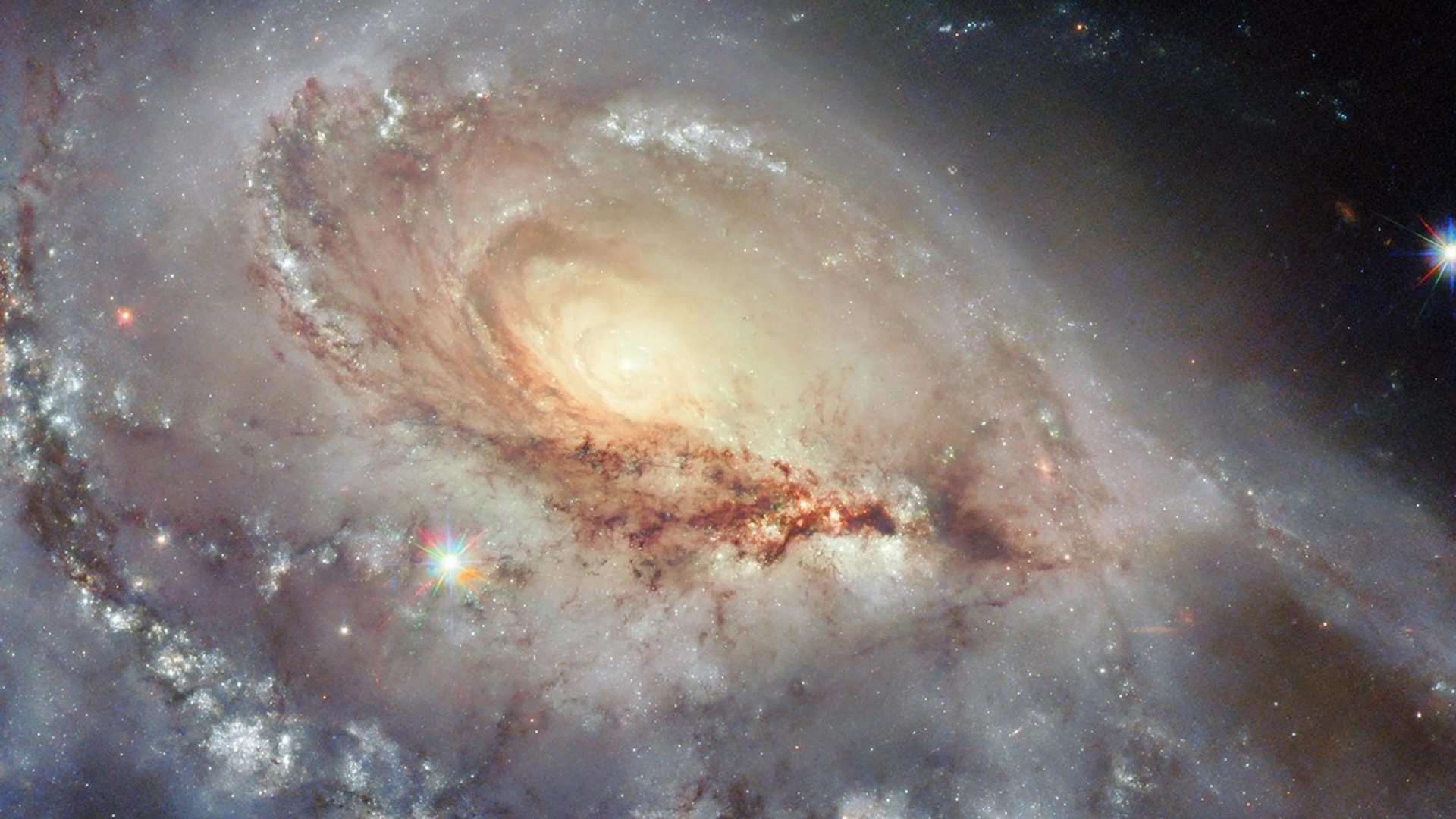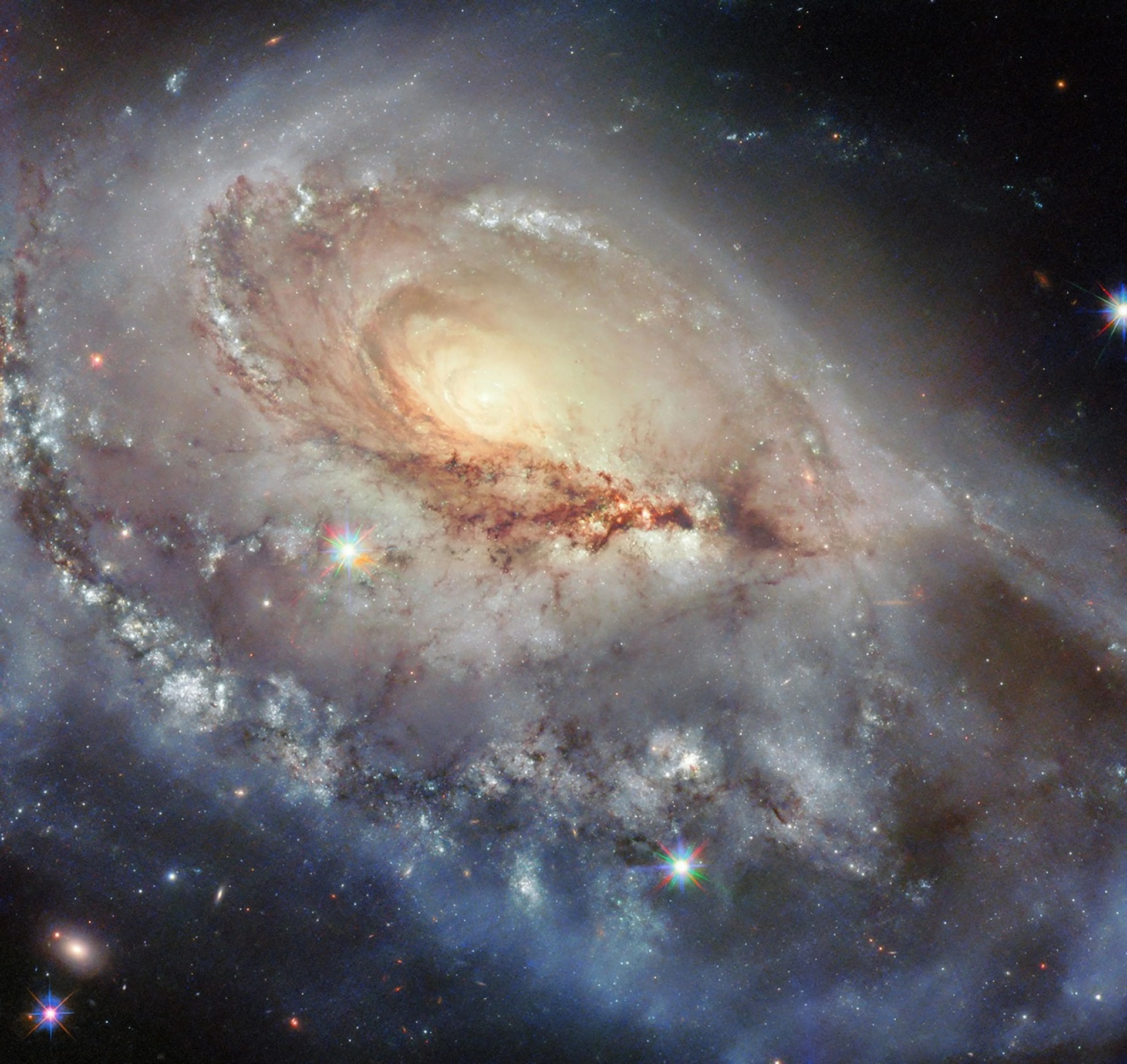Space photo of the week: Bizarre 1-armed spiral galaxy stuns Hubble scientists
Astronomers used the Hubble Space Telescope to image "peculiar" galaxy Arp 184 (NGC 1961) about 190 million light-years away. Remarkably, the spiral galaxy has only one visible arm.

What it is: Arp 184 (NGC 1961)
Where it is: 190 million light-years distant in the constellation Camelopardalis, the giraffe.
When it was shared: April 29, 2025
Why it's so special: What if a galaxy had only one spiral arm?
Our solar system resides on the outskirts of one of the Milky Way galaxy's estimated four spiral arms, according to Space.com, but not all galaxies are like that. In the latest image from NASA's Hubble Space Telescope, a strange galaxy called NGC 1961 comes into focus that has just one — a single broad, star-speckled spiral arm that appears to stretch toward us as the galaxy is viewed from a skewed angle.
It may seem a dramatic point of view, but it's merely what Hubble sees from its line of sight on its orbital path around Earth. On the far side of the newly imaged galaxy, beyond swirls of stars and dust around a bright center, there is no similarly impressive spiral arm, with just a few wisps of gas and stars instead. The image is also available as a panoramic video, a zoomable version, and as a 15-megapixel download.
Its sole spiral arm long ago earned NGC 1961 the additional name Arp 184 and a place in the Atlas of Peculiar Galaxies, a catalog of galaxies that are neither perfectly symmetrical spiral galaxies nor smooth, spherical elliptical galaxies. First published in 1966 by American astronomer Halton Arp, the atlas collects 338 galaxies that are oddly shaped, many because they're interacting with other galaxies. Others in the atlas are dwarf galaxies in flux.

There's another reason why Hubble targeted Arp 184/NGC 1961. It's hosted four known supernovas — the powerful explosion of a dying star — in the past four decades (in 1998, 2001, 2013 and 2021). It's exceptionally rare to catch a supernova in the act, so galaxies with a proven track record like this one make prime targets.Arp 184/NGC 1961 was discovered by German-British astronomer William Herschel in 1788, seven years after he discovered the planet Uranus, the first planet to be found in modern times.
According to observations from NASA's Spitzer Space Telescope, the Milky Way has two main spiral arms — the Perseus and Scutum-Centaurus arms — and two less obvious arms, the Sagittarius and Norma arms. Two minor spiral arms are close to the galaxy's center, the Far-3 kiloparsec arm and the Near-3 kiloparsec arm. Our solar system exists in the Orion Spur between the Sagittarius and Perseus arms.
Get the world’s most fascinating discoveries delivered straight to your inbox.
For more sublime space images, check out our Space Photo of the Week archives.

Jamie Carter is a freelance journalist and regular Live Science contributor based in Cardiff, U.K. He is the author of A Stargazing Program For Beginners and lectures on astronomy and the natural world. Jamie regularly writes for Space.com, TechRadar.com, Forbes Science, BBC Wildlife magazine and Scientific American, and many others. He edits WhenIsTheNextEclipse.com.
You must confirm your public display name before commenting
Please logout and then login again, you will then be prompted to enter your display name.
